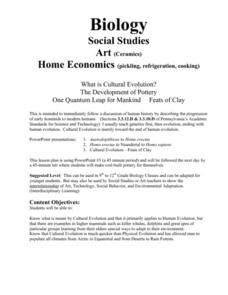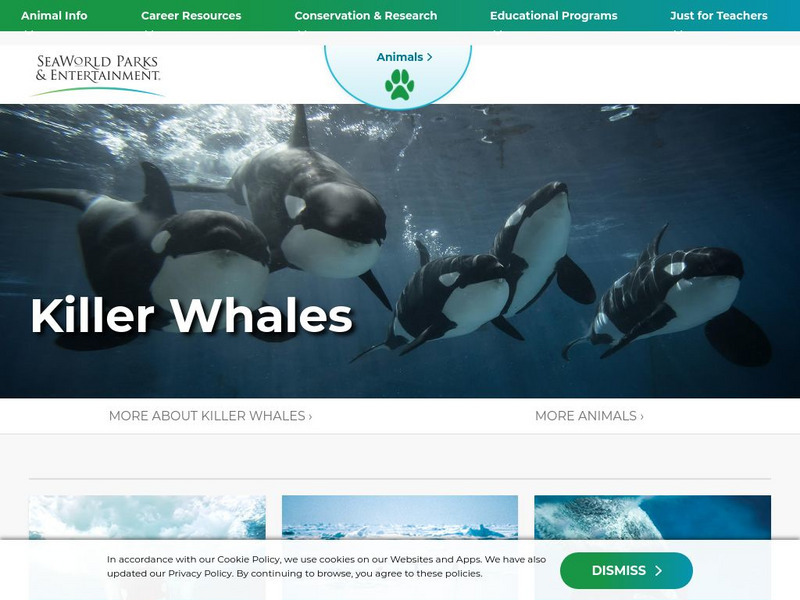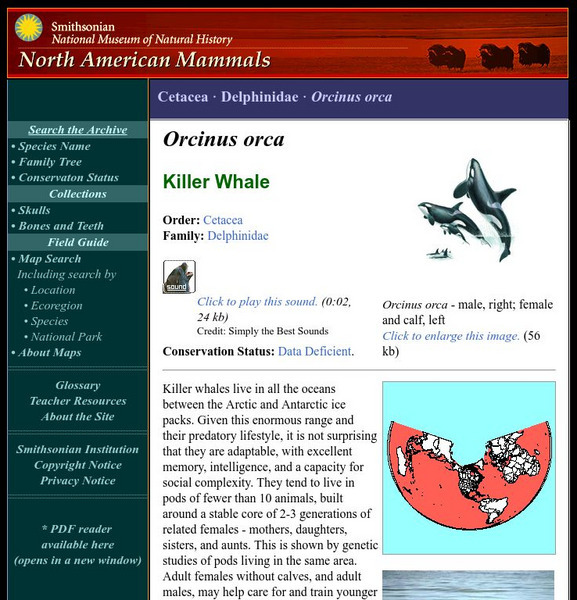Curated OER
Body Plans and Adaptations
For this body plans and adaptations worksheet, students will review the different types of symmetry found in organisms. Students will identify body parts as found on either the ventral or dorsal part of an animal. Then students will look...
Curated OER
What is Cultural Evolution?
Students comprehend what is meant by Cultural Evolution and that it primarily applies at Human Evolution, but that there are examples in higher mammals such as a killer whales, dolphins and great apes of particular groups by exploring...
Curated OER
Orca United Nations
Students study the differences between sets of data and explain how organisms are adapted to their environment. In this marine mammals instructional activity students analyze data based on set criteria.
Curated OER
Adaptations
Students identify features of animals that enable survival in particular environments and group animals on the basis of their similarities. They compare and contrast features of groups of animals.
Curated OER
Now Hear This!
Pupils investigate their hearing range. They participate in a week-long hearing experiment, listening for various sounds during recess time, and determining which noises were easier or more difficult to hear.
Sea World Parks & Entertainment
Sea World: Killer Whales
Outlines the characteristics of the killer whale, including classification, habitat, behaviors, and conservation. Helps students identify with whales with a list of "Books for Young Readers." Information at a level of upper intermediate...
Smithsonian Institution
National Museum of Natural History: American Mammals: Killer Whale
Killer whales live in all the oceans between the Arctic and Antarctic ice packs. Given this enormous range and their predatory lifestyle, it is not surprising that they are adaptable, with an excellent memory, intelligence, and a...






